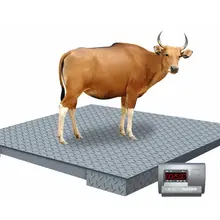Introduction
As precision and efficiency become increasingly crucial in various industries, temperature sensing has emerged as a vital component. This article explores the realm of electric thermocouples, a type of sensor that has significantly transformed temperature measurement. Despite their simplicity, thermocouples provide a robust and cost-effective solution for monitoring temperature across wide ranges. We will delve into the fundamentals of thermocouples, their types, working principles, advantages, and applications. We will also discuss future trends in thermocouple technology and address common challenges along with their solutions.
Understanding Thermocouples
Thermocouples are sensors designed to measure temperatures across broad ranges. They are cost-effective, durable, and offer quick response times, particularly when the probe sheath diameter is small. However, they may not be as accurate or stable as other sensors like RTDs and thermistors. Thermocouples can endure a wide temperature range, but the probe sheath may not always withstand the full temperature range of the thermocouple type.
Types of Electric Thermocouples
Electric thermocouples are available in various types, each with unique properties and applications. The eight primary types are B, E, J, N, K, R, T, and S. Each type is made from different metal combinations, catering to diverse temperature ranges and applications, making them suitable for different industrial and scientific uses. For instance, B type is used in high-temperature applications like glass production, while T type is suitable for environments like food production and cryogenics.
Working Principle of Electric Thermocouples
Electric thermocouples operate based on a unique principle. A time constant, defined as the time required by a sensor to reach 63.2% of a step change in temperature under specific conditions, governs their response times. An exposed junction thermocouple offers the fastest response, with smaller probe sheath diameters enhancing this speed. However, the maximum temperature may be lower, and the probe sheath may not withstand the full temperature range of the thermocouple type.
Advantages of Electric Thermocouples
Electric thermocouples offer several advantages. They are self-sufficient, requiring no external power source as the output emf increases with temperature changes. Their design is simple yet robust, constructed with high strength metals like aluminum, iron, copper, and platinum, making them suitable for demanding industrial applications. Thermocouples are cost-effective, being nearly three times less expensive than Resistance Thermometer Detectors (RTDs). They directly measure temperature, capable of handling temperatures up to 2600oC.
Applications of Electric Thermocouples
Electric thermocouples are widely used in various applications due to their reliability in temperature monitoring. They are integral in industrial manufacturing, experimental settings, and even in household items like meat thermometers. A case study illustrates their use in an engineering laboratory setting, where a K-type thermocouple was used to monitor a high-temperature heat well in a custom electric oven. This allowed for real-time temperature monitoring, ensuring the proper functioning of a Stirling engine prototype. The versatility of electric thermocouples makes them a preferred choice for diverse temperature sensing needs.
Future Trends in Electric Thermocouples
As technology advances, thermocouples continue to evolve. Developments in materials science may lead to the creation of new types of thermocouples that can operate in more extreme conditions or offer improved accuracy. Additionally, advancements in digital technology have led to the development of smart thermocouples that can communicate directly with computer systems, providing real-time temperature data and advanced diagnostics. Despite their limitations, their proven track record and ongoing advancements in thermocouple technology ensure that they will continue to be a popular choice for temperature sensing in the future.
Challenges and Solutions
While reliable, thermocouples can encounter measurement errors due to various reasons. Common issues include selecting the wrong type of thermocouple, problems with the extension wire, variations in alloys, temperature fluctuations around the reference junction, grounding at multiple locations, and thermocouple age. Solutions range from correctly matching thermocouple types, ensuring proper wire connections, using special-limit wires for accuracy, insulating the reference junction, avoiding multiple grounding points, to periodic replacement of the thermocouple.
Conclusion
Electric thermocouples have proven to be a reliable and efficient solution for temperature sensing across a wide range of applications. Their robustness, cost-effectiveness, and versatility make them a preferred choice in various industries. As technology advances, we can expect to see new types of thermocouples with improved accuracy and capabilities. Despite the challenges they face, solutions are available to ensure their optimal performance. The future of temperature sensing is indeed bright, with electric thermocouples leading the way.
































 浙公网安备 33010002000092号
浙公网安备 33010002000092号 浙B2-20120091-4
浙B2-20120091-4